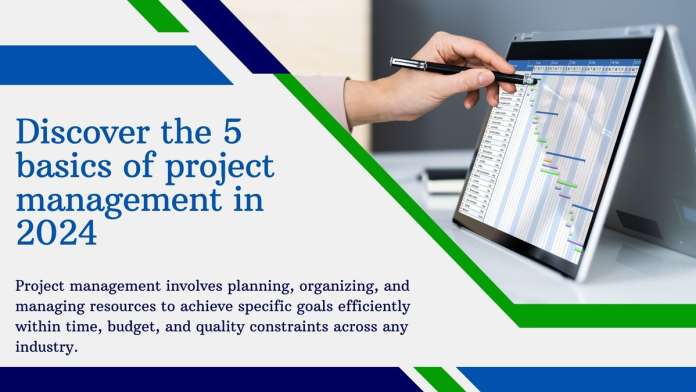Project management is a vital skill for any organization aiming to achieve its goals efficiently and effectively. It involves planning, organizing, and managing resources to bring about the successful completion of specific project goals and objectives. Whether you’re building a new app, launching a marketing campaign, or constructing a new office building, the 5 basics of project management apply across all industries and sectors.
The primary aim of project management is to ensure that a project meets its objectives within constraints such as time, budget, and quality. At its core, effective project management involves clear communication, strategic planning, and adept problem-solving skills.
5 Basics of project management in 2024
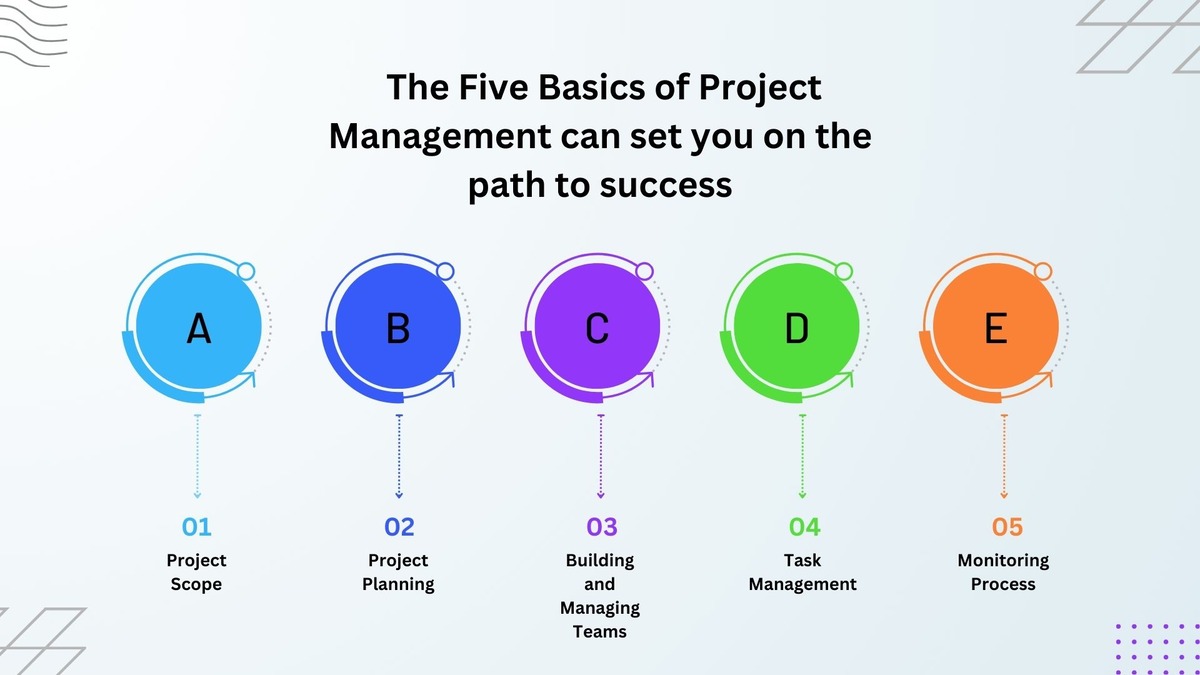
Understanding the five basics of project management can set you on the path to success. These essentials include:
- Defining the Project Scope: Clearly outline what needs to be accomplished.
- Effective Planning: Develop a detailed plan to guide the project execution.
- Building and Managing a Team: Select and manage a team that will carry out the project tasks.
- Monitoring Progress: Keep track of the project’s progression and make necessary adjustments.
- Closing the Project: Ensure all objectives are met and formally close the project.
For instance, if you’re tasked with launching a new software product, applying these basics helps ensure that your project runs smoothly from inception to launch. Setting a well-defined scope prevents the project from veering off course, while effective planning addresses potential challenges upfront. Building a competent team ensures each task is handled expertly, monitoring progress helps you stay on track, and proper closing ensures that every aspect, from testing to marketing, aligns with the project’s goals.
By mastering these five fundamentals of project management, you enhance your ability to lead projects that deliver results, creating value for stakeholders and achieving organizational success.
1. Defining the Project Scope with Real-world Example
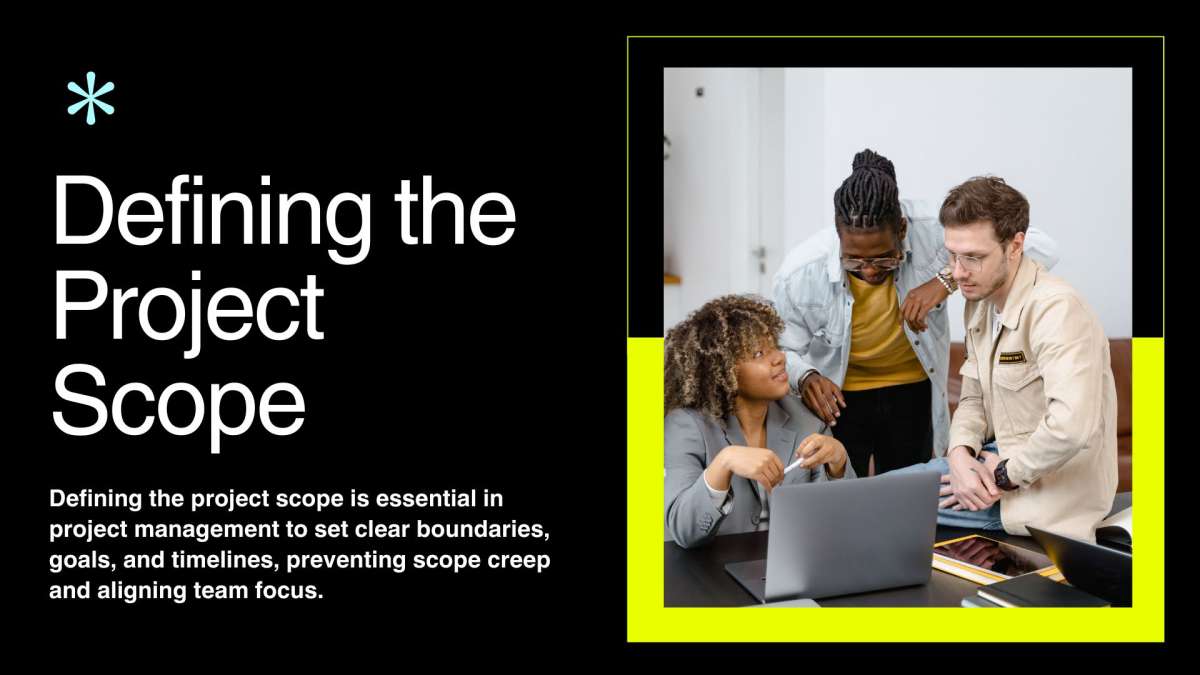
One of the most vital aspects of effective project management is defining the project scope. The project scope outlines the boundaries of your project, detailing what will and won’t be included. By clearly specifying the goals, deliverables, tasks, and timelines, you ensure that everyone involved understands the project’s objectives and limitations, preventing scope creep and keeping the team focused.
-
Real-world Example: Launching a Marketing Campaign
Imagine you’re leading a marketing campaign for a new product launch. Defining the project scope here would involve identifying the target audience, the channels for promotion (such as social media, email marketing, and PPC ads), and the specific outcomes you aim to achieve. You would also set a timeline, such as a three-month period to run the campaign, and determine the budget and resources available.
By establishing what’s included—like specific ad designs, promotional videos, and email newsletters—and what’s not, you offer a clear path for team members to follow. This would include stating that market research and data collection post-campaign are not part of this project but a separate initiative.
-
The Project Scope as a Roadmap
In this example, the project scope acts like a roadmap. Everyone from graphic designers to copywriters knows their roles and what’s expected of them. When a new task or idea surfaces, the team can refer to the scope document to see whether it fits within the project’s boundaries, avoiding unnecessary workload and helping to keep the project on track.
Defining the project scope from the start not only makes planning and execution smoother but also sets the stage for successful project completion.
2. Effective Project Planning Techniques

Effective project planning is the linchpin of successful project management. In this phase, a detailed roadmap for accomplishing project goals is established.
- SMART Goals: One highly regarded method is the SMART criteria, which stands for Specific, Measurable, Achievable, Relevant, and Time-bound goals. For instance, if you’re managing a website redesign, a SMART goal might be: “Increase user engagement by 20% within six months by implementing a more intuitive user interface.”
- Work Breakdown Structure (WBS): Another core technique is the Work Breakdown Structure (WBS), which involves decomposing the project into smaller, more manageable tasks. For a software development project, this could mean breaking the project down into stages like requirements gathering, coding, testing, and deployment.
- Gantt Charts: Gantt charts are invaluable tools for visualizing the project timeline. These charts help in scheduling and ensure that all team members are aware of deadlines and dependencies. For example, if you’re overseeing a marketing campaign, a Gantt chart can help you track activities from initial brainstorming sessions to final content delivery.
- Risk Management: Risk management is yet another crucial component. Identifying potential risks early on and developing mitigation strategies can save time and resources. Conducting a SWOT analysis (Strengths, Weaknesses, Opportunities, Threats) during the planning phase can provide insight into potential pitfalls and areas for improvement.
- Stakeholder Engagement: Lastly, engaging stakeholders through regular communication can make a significant difference. Holding kickoff meetings to set expectations and periodic check-ins to update progress ensures everyone is aligned and invested in the project’s success.
Incorporating these project planning techniques will put you on the path to achieving your project objectives efficiently and effectively.
3. Building and Managing a Strong Team

One of the foundational elements of successful project management is building and managing a strong team. The team is the backbone of any project, and their collective skills and dedication can make or break the project’s success.
- Assembling the Right Team: First, assembling the right team involves identifying and recruiting individuals with the needed skills and expertise. For instance, if you’re managing an IT project, you’ll need software developers, system analysts, and perhaps UX designers. Each team member should have clear roles and responsibilities to avoid overlap and confusion.
- Enhanced Communications: Once the team is in place, effective management becomes crucial. Clear communication is vital—use tools like Slack, Microsoft Teams, or Asana to facilitate consistent and transparent communication. Regular meetings, whether daily stand-ups or weekly check-ins, can help everyone stay aligned with the project goals.
- Encouraging Collaboration: Moreover, fostering a collaborative environment is essential. Encourage team members to share ideas and feedback openly. For example, during a marketing campaign, brainstorming sessions where everyone can contribute creative concepts can yield impressive results.
- Team Motivation: Team motivation is another critical factor. Recognize achievements and progress to keep morale high. Simple gestures, such as congratulatory emails or monthly team lunches, can go a long way in maintaining enthusiasm.
- Handling Conflict Resolution: Effective conflict resolution is another skill that can’t be overlooked. Addressing issues promptly and fairly will keep the team focused on their objectives.
In summary, building and managing a strong team involves selecting the right individuals, fostering clear communication, encouraging collaboration, and maintaining high morale. Your team’s success is a direct reflection of the effort you put into their management.
4. Monitoring and Evaluating Project Progress
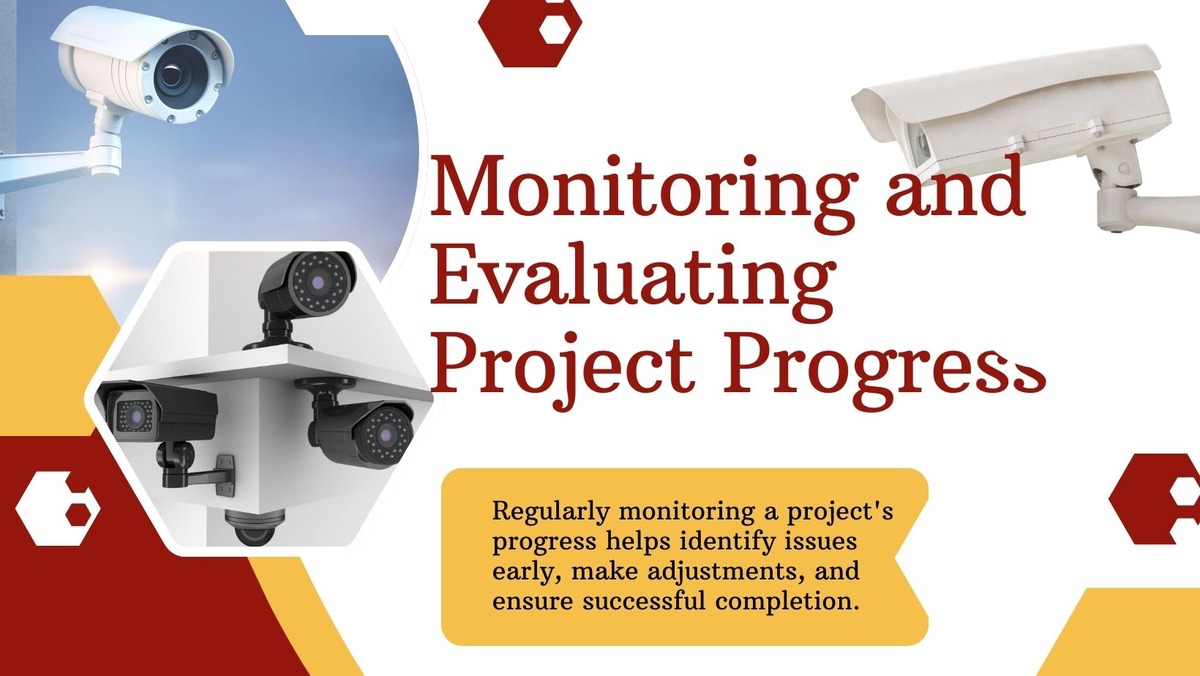
Monitoring and evaluating a project’s progress is a critical aspect of project management that ensures everything stays on track. By constantly tracking performance, you can identify issues early, make necessary adjustments, and ensure successful project completion.
- Establishing Key Performance Indicators (KPIs): A good place to start is by defining KPIs that align with your project goals. These might include deadlines, budget limits, task completion rates, and quality standards. For example, if you’re overseeing a software development project, you might track metrics like code quality, functionality testing results, and the number of resolved bugs.
- Regular Progress Meetings: Hold frequent check-ins to discuss project status, review KPIs, and address any roadblocks. These meetings encourage communication and collaboration. For instance, a weekly team meeting could help identify if a particular task is falling behind and allow you to reallocate resources as needed.
- Using Project Management Tools: Leverage tools like Asana, Trello, or Microsoft Project to maintain an up-to-date and accessible project status overview. Such platforms can provide real-time data and visual representations of project progress, making it easier to spot bottlenecks or delays.
- Stakeholder Updates: Keeping stakeholders informed is vital. Send regular updates via email or hold review sessions to share the project’s progress, milestones achieved, and any issues that may require input. Transparency helps build trust and ensures everyone is on the same page.
- Review and Adjust: Be prepared to pivot if things aren’t going as planned. Analyze the data collected, learn from any setbacks, and adjust your strategies accordingly. For example, if you’re managing a marketing campaign and notice that certain channels aren’t performing well, shift focus to more successful platforms.
By diligently monitoring and evaluating your project’s progress, you’re better equipped to steer it toward success, ensuring that objectives are met on time and within budget.
5. Closing a Project Successfully
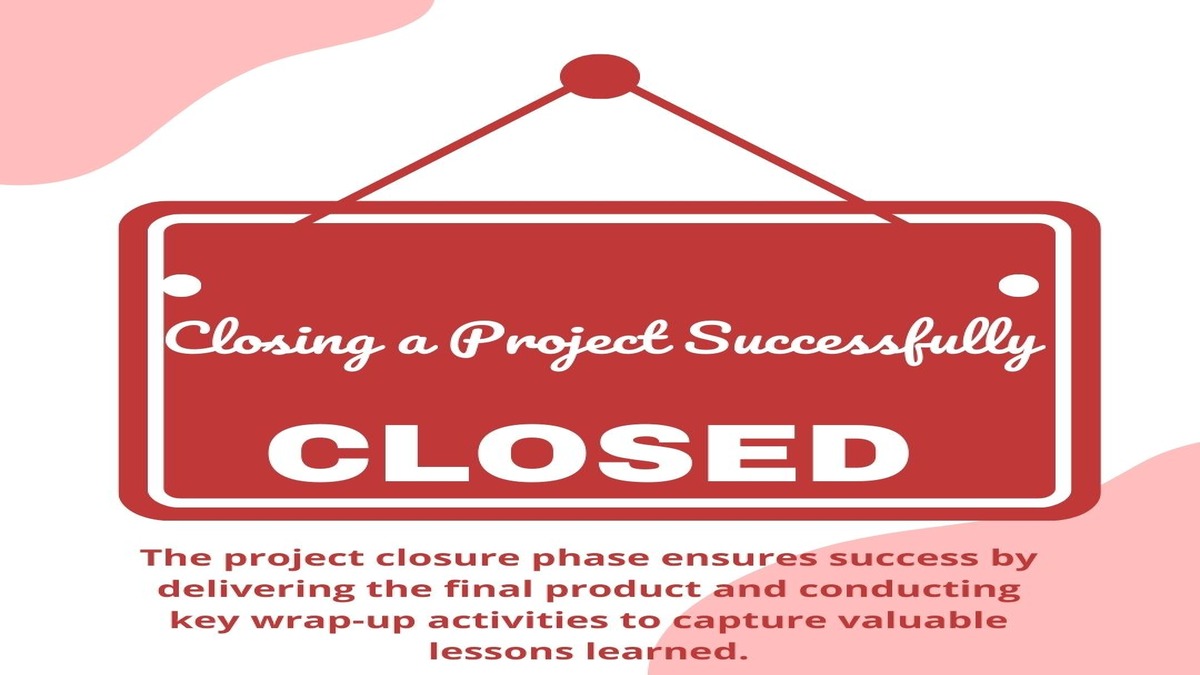
The project closure phase is often overlooked, but it’s a crucial step to ensure the project’s success. Closing a project isn’t just about delivering the final product but involves several key activities to wrap things up neatly and learn from the experience.
- Comprehensive Project Evaluation: First, conduct a thorough project review. This means evaluating the project’s performance against initial objectives and deliverables. Assess what worked well and identify areas for improvement. This could involve feedback sessions with your team and stakeholders to capture different perspectives. For example, if your project was to develop a new software application, gather input from developers, testers, and end-users.
- Ensuring Completion of Deliverables: Next, ensure all project deliverables are completed and meet quality standards. This may require a final round of verification and validation. In our software development example, ensure that all features work as intended and that any bugs have been resolved.
- Documenting Lessons Learned: Documenting lessons learned is another essential part of project closure. Archive important documents, log issues encountered, and detail how they were resolved. This creates a knowledge base that can be invaluable for future projects.
- Securing Stakeholder Approval: Also, it’s important to get formal acceptance of project deliverables from stakeholders. This is often done through a sign-off process. Ensure that all stakeholders are satisfied with the final output to avoid any future disputes. For instance, have an acceptance checklist signed by the client in the software development project.
- Releasing Project Resources: Finally, release project resources. This includes closing contracts, reallocating team members to new tasks, and updating financial records. If you’ve hired external vendors for the project, confirm that all contractual obligations have been met and process their final payments.
By meticulously closing a project, you not only ensure its success but also set the stage for future initiatives to be even more successful.
Read More: Top 10 Popular SaaS Marketing Blogs in 2024

